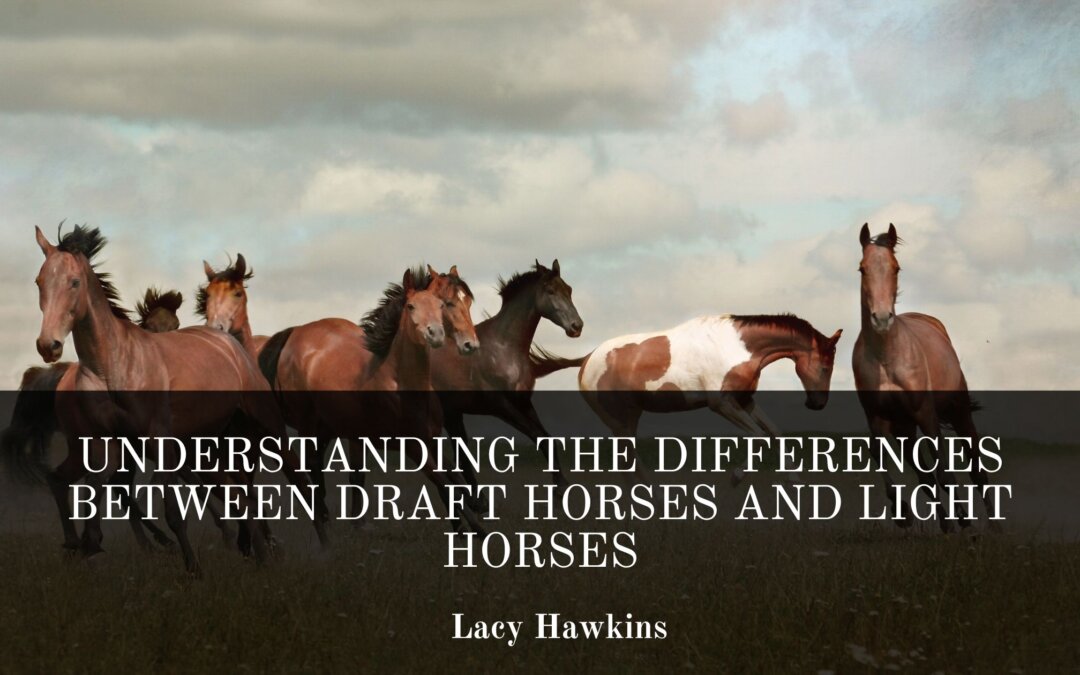Draft horses and light horses are two distinct types of horses, each bred for specific purposes and possessing unique characteristics. Understanding the differences between draft and light horses helps horse owners, trainers, and enthusiasts appreciate these animals’ diverse capabilities, strengths, and needs. Here’s an overview of the key distinctions between these two horse categories.
Physical Characteristics
One of the most noticeable differences between draft and light horses is their physical build. Draft horses, such as the Clydesdale, Percheron, and Belgian, are massive and muscular, often weighing 1,500 to 2,200 pounds or more. They stand tall, with broad backs, powerful necks, and heavily feathered legs, making them ideal for tasks that require strength and endurance. This substantial build gives draft horses the nickname “gentle giants.”
Light horses, on the other hand, are more refined and typically weigh between 900 and 1,500 pounds. Breeds like the Arabian, Thoroughbred, and Quarter Horse fall into this category. They have leaner, more athletic builds, often standing around 14 to 16 hands high, though some can be taller. This lighter frame and athleticism suit them for speed, agility, and endurance in activities like racing, show jumping, and trail riding.
Temperament and Behavior
Draft horses are generally known for their calm, gentle, and patient temperaments. This mild demeanor is partially due to their historical roles in farming, hauling, and other labor-intensive tasks where steady behavior was essential. Their large size and strength demand a calm nature, as a high-strung or overly reactive draft horse would be difficult and potentially dangerous to handle.
Light horses tend to be more spirited and energetic, as many breeds were developed for speed and agility. This can mean a more alert, responsive, and sometimes excitable disposition. However, temperament varies widely among light horse breeds; for example, Arabians are known for their intelligence and stamina, while Quarter Horses are often praised for their calmness and versatility. Light horses’ generally quicker responses make them ideal for competitive events, as they are often more responsive to their rider’s cues.
Historical Roles and Uses
Historically, draft horses were bred for labor-intensive roles. Before the advent of modern machinery, they were crucial in agriculture, logging, and transportation, pulling plows, wagons, and carts. Their strength and endurance allowed them to work long hours on farms and in industrial settings. Some draft breeds, like the Shire and the Clydesdale, also served as war horses in medieval times, carrying heavily armored knights into battle.
Light horses, conversely, were bred for speed, agility, and endurance. They have been used in various roles that required quick movement and responsiveness. The Thoroughbred, for example, was bred specifically for racing. In contrast, the Arabian, one of the oldest light horse breeds, was used by Bedouin tribes for endurance and loyalty in long desert journeys. Today, light horses excel in sports and disciplines such as racing, dressage, jumping, reining, and pleasure riding.
Training and Care Needs
Training methods for draft and light horses often differ due to their temperaments and physical capabilities. Draft horses require less intense conditioning but benefit from training that emphasizes obedience and patience, given their size and strength. Light horses, in contrast, may undergo more vigorous training regimens, especially if they are being prepared for competitive events.
Draft horses generally have slower metabolisms than light horses, meaning they require less feed relative to their size and are often easier to maintain. However, their large size can stress their joints and hooves, so they require consistent hoof care and sometimes specialized diets to support joint health. Light horses, particularly those in athletic careers, often need a higher-calorie diet and specialized nutrition to support their energy needs.
Conclusion
The differences between draft and light horses are vast, encompassing physical build, temperament, historical roles, and care requirements. Draft horses are strong, gentle giants suited to work and labor, while light horses are agile and spirited, ideal for sports and recreational riding. Both types of horses bring unique qualities to the equestrian world, and understanding these differences allows us to better care for them and appreciate their specialized skills. Whether it’s a draft horse’s power or a light horse’s agility, each brings something exceptional to the stable.
